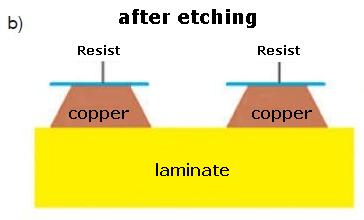Welcome to 3DPrinterChat.com. This article is part of the DIY 3D Printer from scratch. You will learn a bit more about how the Heated bed works.

What is a heated bed and how it works?
The heated bed is a device that should provide a warm surface to the plastic stick. Heated-beds have a huge advantage against warping and other adhesion issues when compared to cold beds. Because of the smaller temperature difference. The heated bed have the heating element and the surface material, that can be glass, aluminium or the heating element itself.
The heating element works by converting electrical energy into heat. This phenomenon happens as result of electric current flows through an resistance. The amount of energy converted into heat is measured in WATTS. for example, an ordinary heated bed produces about 80W of heat.
There are two main kinds of heated beds:
- Printed circuit board Heated Bed;
- Resistor bank Heated Bed;
- Peltier Effect Heated Bed.
since the resistor bank and the Peltier effect are not used due its disadvantages, we wont cover it. Here is a image of how the resistor bank looks.

How a PCB Heated bed works
The heated bed is made using the printed circuit board concept, which is basically a board (which is usually made of glass or fenolite) with a thin layer of copper on one side (or even multiple layers).
Then this board is printed or treated in a way that will protect some lines of copper, and leave the rest exposed, then this copper will receive a treatment with acid to remove the parts not protected, this process will leave us with only the useful circuits and connections,


Those tiny lines of copper will behave like an resistor (remember that everything in the universe poses some resistance to electrical flow, and this resistance is dissipated as heat), When we connect those “wires” to a power supply will we will generate heat, exactly what we were expecting.
The PCB has the great advantage of using a small amount of space when compared to other kinds of heating elements, it also can contain multiple layers, which will increase the power/cm² dissipated dramatically.
If properly designed, the printed circuit board is capable of distributing the heat more efficiently than any other kind of heated bed, since the power distribution can be drawn and simulated.
Heat distribution and why it matters
See these two examples below:



As you can probably guess, a deficient heat distribution is bad, but why is it bad? For materials with high “warping rate”, or technically speaking: with high contraction propensity. These temperature differences will create opposite forces (contraction and expansion), that will force the material to bend, see the image below:

On the first example, we have a cold bed, you can see the red area which the nozzle has just passed by, and the heat it leaves behind, this is likely to cause warping.
On the second example, with the heated bed, we can see that the printed part is also hot, this will reduce the contraction and expansion forces because the temperature difference is lower (ΔT), this part is not likely to have issues with warping.
Now that you understood why a proper bed heat distribution matters, i’ll take as example the famous MK2 Heated bed
RepRap MK2 | $14 – 18
The MK2 Heated bed is the most used heated bed by the DIY community. It is an printed circuit board heated bed which has the advantage of being capable of handling 12 or 24v, you just need to change the wires position.
Bed dimensions: 200×200 mm (heated area)


Final judgement:
The Mk2 is a the best and cheapest bed and you should consider it. The heat distribution is indeed fair. for a naked bed. But keep in mind. If you are considering to print something with the maximum allowed size (200×200), The warping propensity is bigger, since there will be a great temperature difference.
If you don’t want to replace your current heated-bed, there are a lot of workarounds, but the two best are:
Improving with glass
adding a glass sheet on the top of the heating element, 3-5mm gives the best result.

Example image of a MK2 with 4mm glass. source
Improving with Aluminion
Adding a aluminium sheet on the top of the heating element, 3-4mm gives the best result. the output will be the same as the previous image. This setup is preferred for use with inductive probing on autoleveling.
Credits and Sources:
All this work would not be possible without the awesome posts below, consider visiting them!





Thanks for sharing the facts on heated beds.
Great info, hope its useful to me at some point soon.
Would have enjoyed reading about the temperature correction mentioned. Also about multi-zone beds and beds that are engineered to not have cold corners. Regardless, very informative. Thanks.
A helpful article. thanks for sharing.
Peace!
This will be really helpfull for my new printer
I understand that this is about making a DIY reprap-style machine, but the information was very helpful in all contexts around 3d printers with heated bed.
I own a Monoprice Mini, a very hackable machine, and I am wondering if there is some way to add thermal camera to watch the print bed during printing. This would then connect to a computer, and then the computer would control the heated bed.
This would require that the heated bed be replaced / modified to allow fine-control, further playing into the DIY-style effect of this article.
If this is successful, you could prevent opposing forces caused by temperature tolerance.
Ioved this article. Thanks for the great info!